Review for No Game, No Life
Introduction
For some time now, MVM have been adding Blu-ray sets to their deal of the week, potentially letting you own complete series for £15 each. That’s a great bargain to begin with, so it would take something ridiculously cheap for me to get an MVM series from elsewhere. So when No Game, No Life showed up on sale in Australia, the Blu-ray including the soundtrack, it was at the kind of price that made me wonder just how the publishers could afford to discount it so much. The Blu-ray, including the soundtrack, imported from Australia, for less than MVM’s discount pricing sounded unreal. In retrospect, it is unreal, as the publisher, Hanabee Entertainment haven’t released an anime in months, and indeed go to their website, the front page only has merchandise on it, no media, and it’s clear from navigating their severely cut down site, that they’re in the process of liquidating their stock. No Game, No Life wasn’t discounted when I bought it... it was a clearance. Although, with MVM’s Collector’s Edition long since deleted, this is probably the only way to get the Region B release with the soundtrack now.
[Update] And now, since my speculation, Hanabee have issued a statement regarding their long silence and inactivity. It turns out that they’ve had to restructure following the end of their deal with Rooster Teeth. They’ll be getting back into releasing anime in 2020. So maybe not a clearance for No Game No Life; just incredibly good luck.
In cyberspace they are legends, the collective known as [ ] a.k.a. ‘Blank’, gamers who win at everything. Their non-names are at the top of every leader-board, and they defeat all challengers without fail, even if those challengers use hacks and cheats to try and gain an advantage. As always, real life is more boring and dispiriting. ‘Blank’ are siblings Sora and Shiro, and they are NEETs, dropouts from society who have become antisocial recluses, living only for otaku culture and playing games. This world is something that they just can’t engage with.
An enigmatic e-mail changes everything. A mysterious gamer challenges them to a game of chess, and when they win, offers them another world, a better world more suited to their talents; a world where everything revolves around games. It’s not a joke. They get transported to the world of Disboard, a fantasy world where 16 races once warred for supremacy. The god Tet tired of the bickering, and changed the rules so that conflict could only be resolved through games, and all were bound by 10 Pledges to keep the games fair. It’s Tet who’s pulled brother and sister Sora and Shiro into this world, and he sets them down in the Elkia Kingdom, the redoubt of the humans, called Imanity in Disboard. The Elkia Kingdom is a small patch of land, and Imanity are lowest ranked of the races of Disboard. They’ll have their work cut out trying to win this game. The first thing they have to do is become King, which in this country is decided by gambling, and the current heir to the throne, Stephanie Dola is a terrible gambler.
12 episodes of No Game, No Life are presented across 2 Blu-ray discs from Hanabee, and you’ll also find the three soundtrack CDs in the case.
Disc 1
1. Beginner
2. Challenger
3. Expert
4. Grandmaster
5. Weak Square
6. Interesting
7. Sacrifice
8. Fake End
Disc 2
9. Sky Walk
10. Blue Rose
11. Killing Giant
12. Rule Number 10
Picture
The main reason I wanted to double dip on No Game, No Life was the image. Take a look at the screen shots to see why. This is one seriously colourful, mega saturated show. It’s an animation that just glows from within, with a neon colour scheme. DVD has its limitations, not least in the richness of the colour that it can display. That saturation results in a greater perception of colour bleed in standard definition, and watching the show makes you feel like you’re trying to define an amorphous blob.
Not so with the Blu-ray. The show gets a 1.78:1 widescreen 1080p presentation, and the colour in this show is still absolutely crazy. This is like Las Vegas in anime form. But the richness of the colour is better than the DVD, while the definition and clarity of the image makes it a lot easier to watch. The character designs are pretty generic, but memorable. The world design is rich and vibrant, making the most of the fantasy, and contrasting vividly with what little we see of the ‘real’ world. The animation is fluid, and accomplished with energy, it’s a show replete with in-jokes, sight gags, and pop culture references, so it’s worth keeping an eye out, and there is also more than the usual quota of fan service here.
Sound
You have the usual choice between PCM 2.0 English and Japanese, with translated subtitles and a signs only track locked during playback. Thanks to the Blu-ray presentation, we also avoid the PAL speedup and pitch-shift of the DVDs. As ever my preference was for the original Japanese audio, which certainly didn’t disappoint. The characters are suitably cast, and the actors give the usual, enthusiastic performances for a comedy piece. One issue might be an oddity in the subtitles. One of the characters has a habit of adding ‘desu’ to the end of her sentences. The subtitles choose to translate this as ‘thanks’ which doesn’t always make sense in the context of what she is saying. It’s a vocal affectation which isn’t easily translated (basically she’s a crude speaking girl who ends her sentences with a word of politeness). The subtitles are otherwise accurately timed and free of typos. As for the dub, it is a Sentai dub, which should be warning enough.
Extras
You get five discs in a BD Amaray case. The two Blu-ray discs are held on a centrally hinged panel. There is another panel holding two of the soundtrack CDs, and the third is on the back panel of the case. The sleeve has the episode listing on the inner left side, and the soundtrack listing on the inner right side.
The discs present their content with static menus. Each episode is followed by a translated credit reel.
There are more than the usual extra features here too. No Game, No Life has character commentaries. They get the voice actors, in character to talk over the show and have some fun. They are subtitled in English and presented as follows.
Disc 1
Episode 1 has Sora, Shiro and Steph chatting, episode 4 sees Steph joined by Jibril, while episode 6 has Sora alone, and episode 8 is hosted by Tet and Izuna.
Disc 2
This has two commentaries, with episode 10 by Kurami and Fi, and episode 12 has Sora, Shiro, Steph, and her late grandfather the King, Makoto Dola.
Incidentally, save the commentaries for last, as they usually feature characters yet to be introduced in the show, and can be a bit spoilery.
As well as the commentaries, there are six No Game, No Life short animations, between two and three minutes apiece, allowing for more fan service humour with the characters, without the added burden of story narrative.
You’ll find 3 minutes of Japanese Commercials, 6 minutes of Japanese Promos, the textless credits, and trailers for Muv Luv Alternative: Total Eclipse, Brynhildr in the Darkness, and Monthly Girls Nozaki-kun.
Most significantly with this Hanabee release, you get the soundtrack CDs with plenty of music (some I can’t even recall from the episodes, so there may be some alternate versions and unused tracks here). Disc 1 lasts 66:51, Disc 2 lasts 56:41 and Disc 3 lasts 64:19.
A lot of soundtrack CDs that you get free with anime are disposable fodder, maybe 20 minutes of music, and no sign of the theme songs, none of it really that good. No Game, No Life’s soundtrack collection is a lot better than I was expecting, some really nice, mellow, trance style electronica with the occasional character song thrown in, that I would be happy spinning on my CD player to chill to.
Conclusion
I wasn’t expecting much from No Game, No Life. After all, anime about gamers and otaku that get sucked into a fantasy world are two a penny, especially those that get trapped in some kind of virtual hell (Log Horizon, Sword Art Online etc). Quite recently MVM brought us Outbreak Company and they’ve also been working through Familiar of Zero, both of which also saw otaku sent forth into their ideal fantasy realms, so I felt quite sated with the genre when No Game, No Life turned up for review. The first few episodes didn’t help much, as I really don’t get along with this show’s visual aesthetic. The over-exposed look, coupled with neon bright, primary colours makes my eyes hurt, and I felt that I ought to watch this show with my shades on. I really should pay more attention to the shows that MVM choose to give the Collector’s Edition treatment. They wouldn’t choose such shows at random. For No Game, No Life is really quite good indeed, once you get past the neon. In fact it might be the best of its genre.
What makes the show stand out among its peers is the focus it has on games and game playing. The protagonists, siblings Sora and Shiro might by socially excluded NEETs, unable to actually engage with society head on, but when teamed up on the Internet, they are unbeatable gamers, able to overcome any foes, even those using cheats and hacks. Shiro is the quiet, grey-haired girl anime stereotype, while Sora is outgoing and verbose, when he’s in his comfort zone, which at the start of the series is only with his sister. It’s their facility with games that catches the attention of a capricious god named Tet, and after testing them with a game of chess, he brings them to his world of Disboard, where war, conflict and killing have been done away with, and replaced with 10 rules of gaming to govern 16 contentious races. The competition for territory and power is still there, but it has to be won through games, and race champions.
The ultimate gamers are thrown into a fantasy world unrecognisable from their home, so their socially excluded tendencies aren’t provoked, and it’s a world where all is decided by gaming, their ideal world. They’re at the lowest rung of the ladder, beginners, but all they have to do is figure out the rules of the world, and to win the ultimate game, once they figure out what that is. As Sora notes, in most anime like this, the aim of the game is to figure out a way back to the real world, but in this case, why would the siblings ever want to leave?
Actually, No Game, No Life is more like a series of games within a larger game. You have 16 races vying for control of a world, with each of the races having special powers appropriate to their kind, and all bound by the Ten Pledges that govern every game, bets must be honoured, don’t be caught cheating, that kind of thing. At the start of the anime, humanity, or Imanity as they are known on Disboard, are the weakest of the sixteen, with no special powers, no magical affinity, and pretty much on the verge of extinction through continual game losses of territory, resources and power. Sora and Shiro naturally have a bias towards Imanity, and that’s where they start their rise to the top, by first winning the game to become the next king of Elkia, and regaining Imanity’s losses, then advancing up the ranks of the races.
Everything is resolved through games, whether it’s poker, or chess, or word games, up to the point where they encounter the Warbeasts and challenge them to a game, only to learn that the Warbeasts are Disboard’s technological race. They’ve created a VR game to play in a virtual world that looks just like Tokyo (provoking Sora and Shiro’s social exclusion syndrome). Of course these games don’t play out as you would expect, given the various races’ special abilities, and little tweaks to the rules. What it does mean, is that the episodes are deftly written and very well structured, the convoluted twists and turns of each game very much a key selling point to the anime, drawing the viewer in, and making them hang on every word. By the time we got to episode 9, where Sora has suddenly vanished from the world, I was sold on the series completely. It begins with only Shiro left with vague memories of his existence, and it turns out that he’s started a rather particular game, and it’s down to Shiro to confirm that her brother truly exists, figure out the rules of the game, and help him win it, all without her brother actually existing in the world. It’s a fascinating idea for an episode that the show pulls off brilliantly.
Despite the narrative brilliance, the characters themselves are rather mundane and predictable, conforming to fan expectations. This is a show that leans to the comedy side of things and maintains a healthy level of fan service throughout, with ribald humour a large aspect to its entertainment value. Communal bathing with booby gropes do ensue. The supporting cast do live up to this aspect, mostly female, and all liable to belong to Sora’s harem, if Shiro would ever let him have a harem, with most of them falling for his gaming brilliance, despite his perverted nature.
It’s fun seeing the former princess of Elkia, Steph trying to head-desk her feelings for Sora out of her skull whenever she gets too gooey-eyed over him. Kurami is the human girl who was initially trying to take over the kingdom, with the aid of her Elf sponsor Fi (Elves have magic that humans can’t detect), and when Sora and Shiro beat them anyway, they grudgingly start to turn in their favour. Then there is the Flugel Jibril, from a race of powerful and very arrogant warriors who value knowledge above all. Jibril initially doesn’t deign to notice Sora and Shiro, but when they thoroughly trounce her, she practically becomes their loyal servant. Another aspect to the humour is the otaku references; there’s plenty of nods here to other anime and manga, and the pop-culture references do tickle, as does Sora and Shiro’s tendency to revert to their social exclusion syndrome at the unlikeliest of times.
No Game, No Life’s biggest strength is in its focus on games and gaming. It results in some very well-written and fiendishly structured episodes. The humour and fan service is pretty much par for the course for such fan-favourite anime, and it’s done with pace, energy and verve, and is at least entertaining. The downside is that the show plays like a prequel series to a bigger, much longer show (of the sixteen races, Sora and Shiro have ‘conquered’ just one at the end of the series), and it very much leaves you on a promise of a season 2 and more, none of which has materialised at this point.
But No Game, No Life is a great little, fun and entertaining show. And now that I’ve seen it on Blu-ray, I’m happy to confirm that the HD upgrade really does make the difference when it comes to appreciating this show’s eye-watering colour palette. The clarity of the image, the better definition of the colours is so much more appealing than the DVDs. It’s as if the SD format gave its best shot, and surrendered halfway through. I’m reminded of videogaming in the 16-bit era. The consoles, the Amiga and Atari ST would come out with decent arcade conversions, and the Spectrum and C64 would get conversions as an afterthought. The nadir was Streetfighter II on the Spectrum, an hour of multiload for a 30 second fight with unplayable controls. That’s the DVD version of No Game, No Life compared to the Blu-ray. This is a show you might actually want on UHD 4k, not for the resolution, but for HDR! This time however, the real problem is the lack of any continuation. I want more in this world, and more with the characters of Shiro, Sora, Steph and so on. Good though it is, the No Game, No Life Zero prequel movie isn’t the same thing as a sequel.
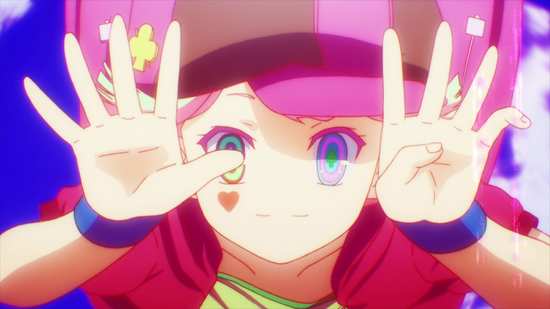
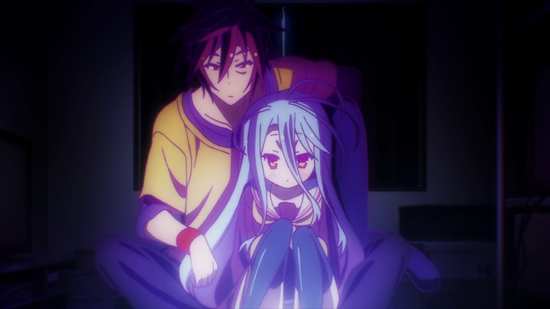
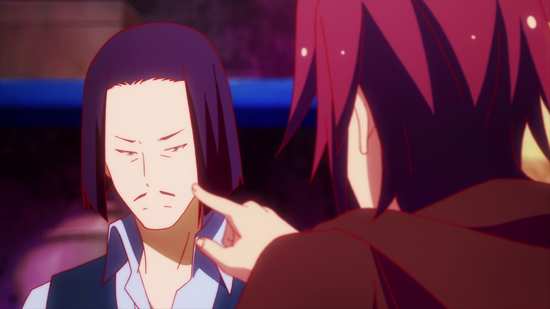
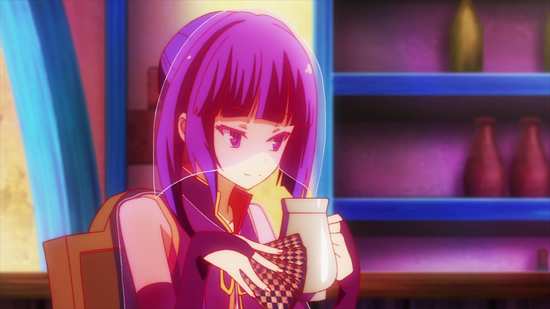
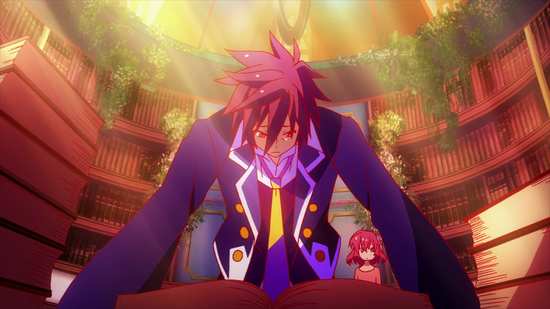
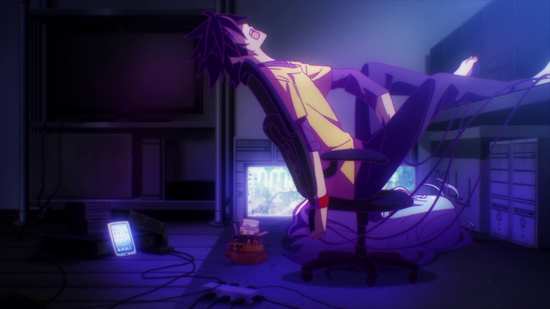
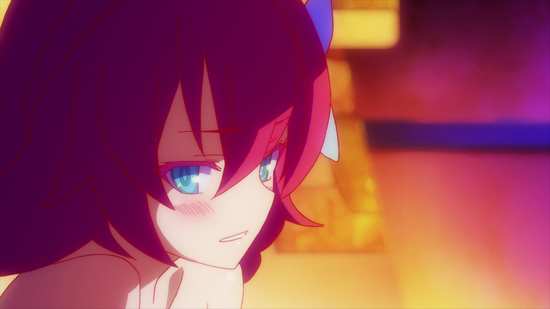
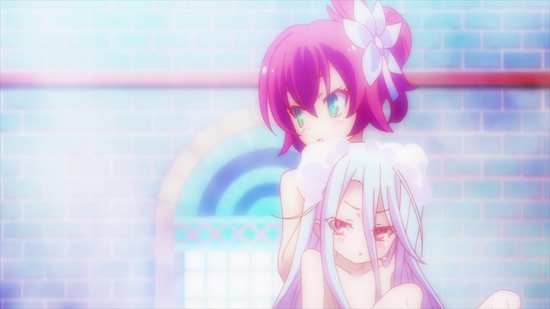
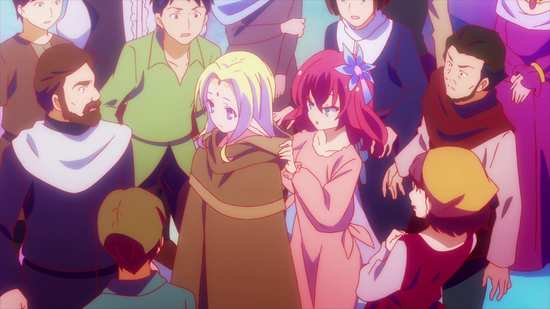
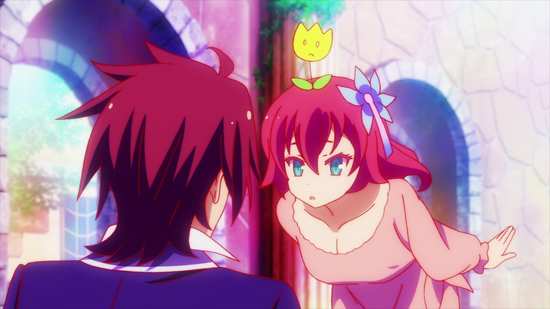
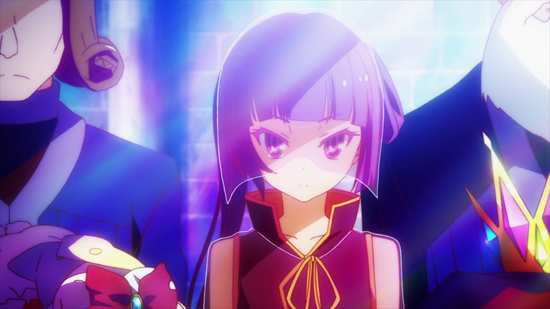
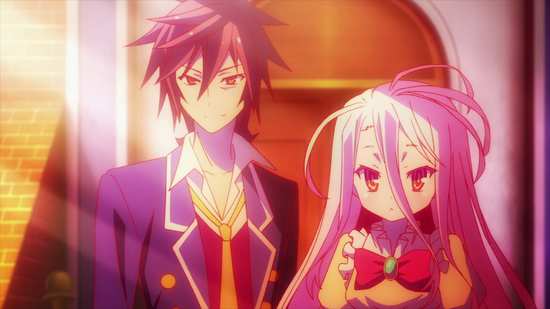
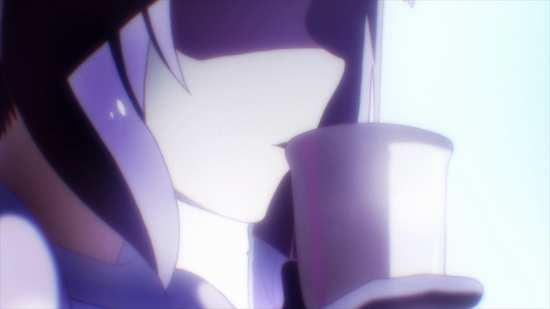
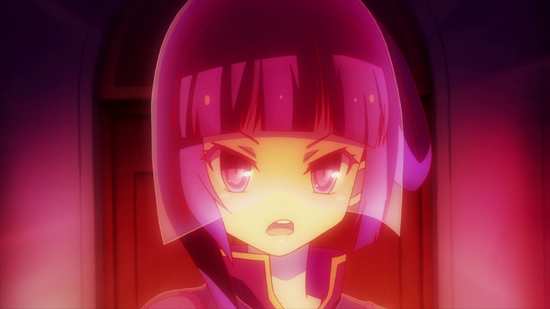
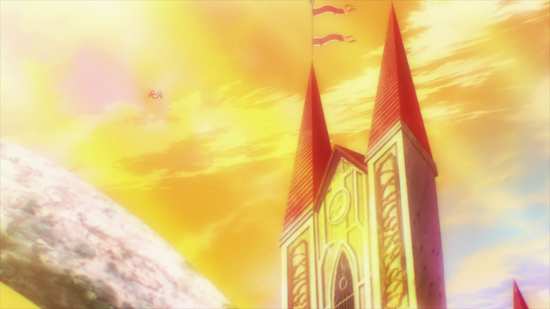
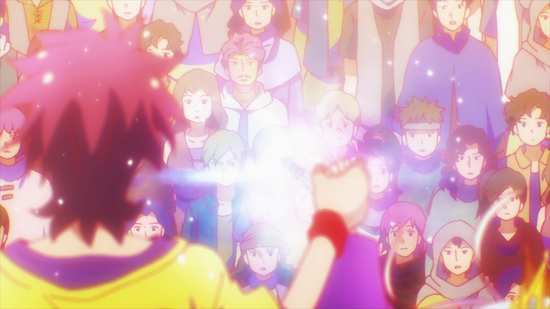
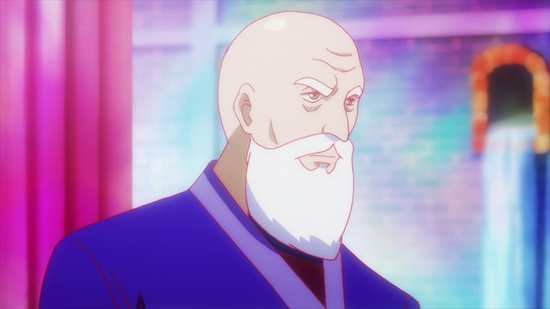

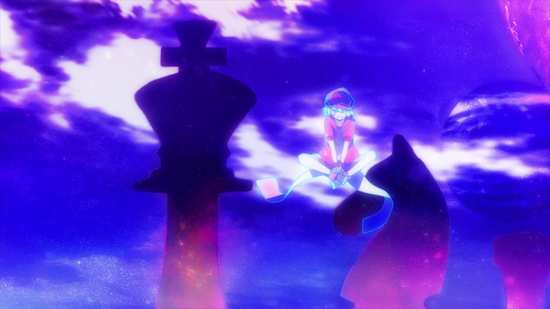
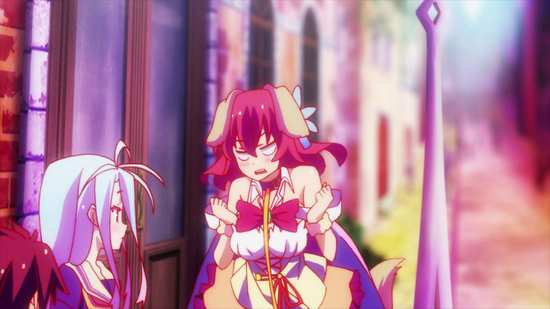
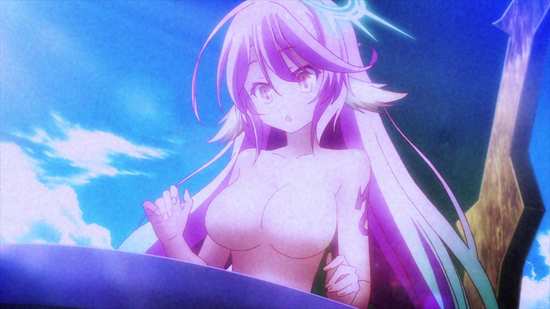
Your Opinions and Comments
Be the first to post a comment!